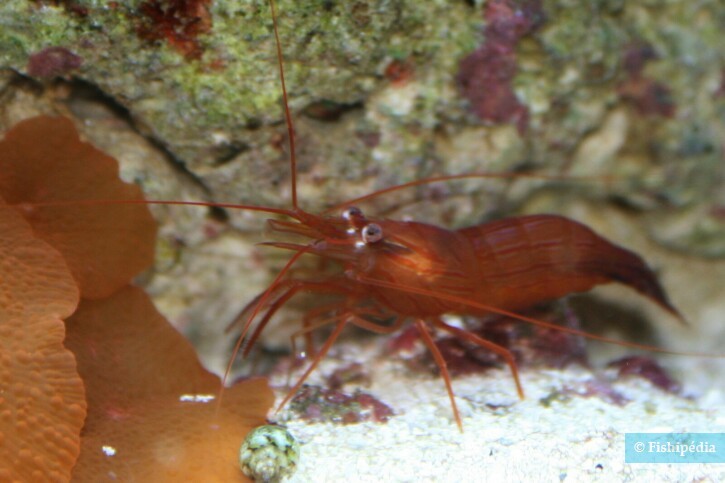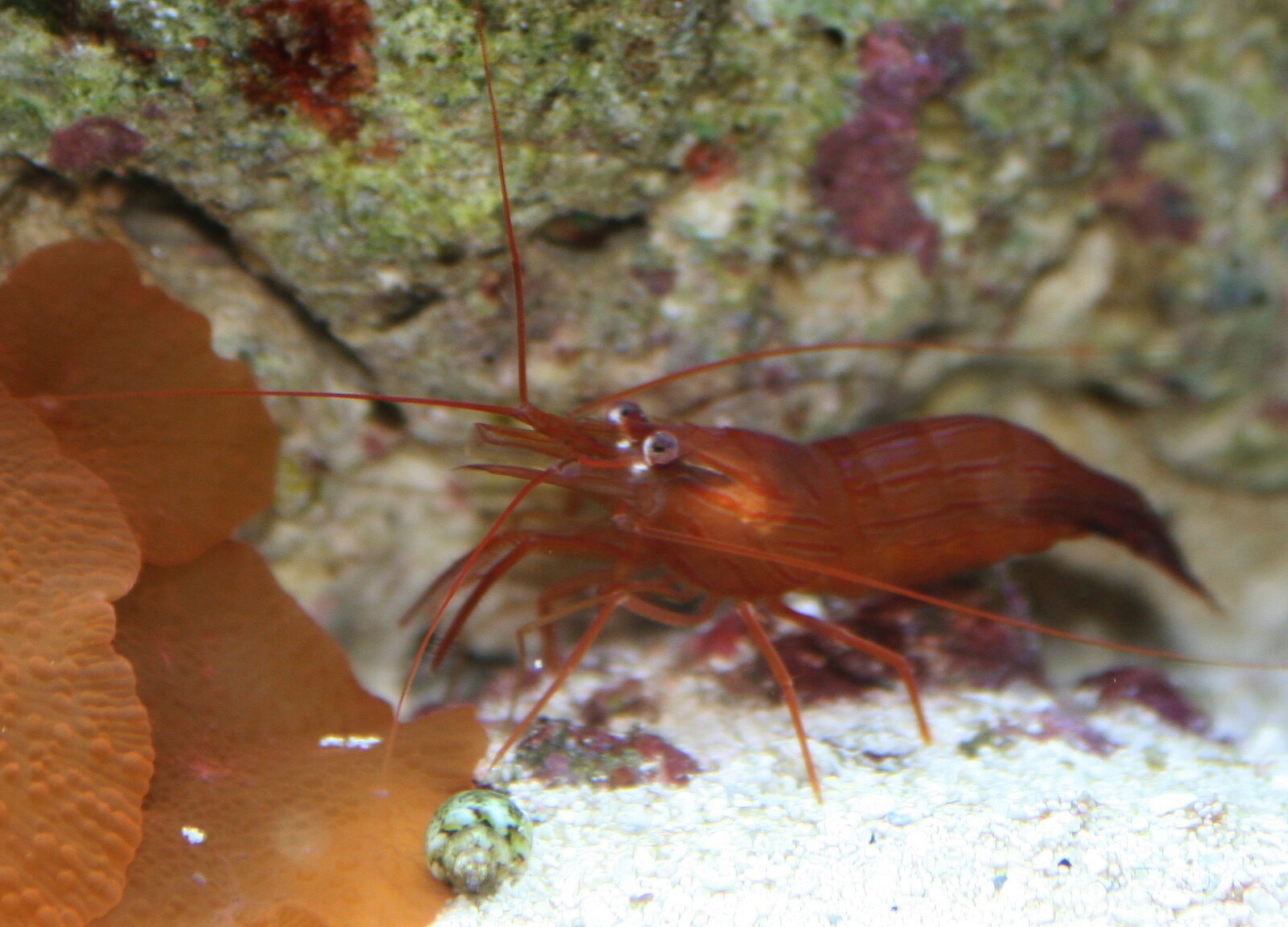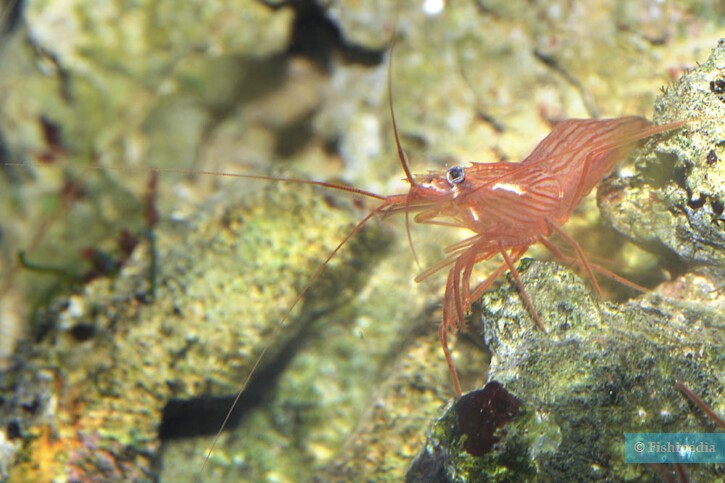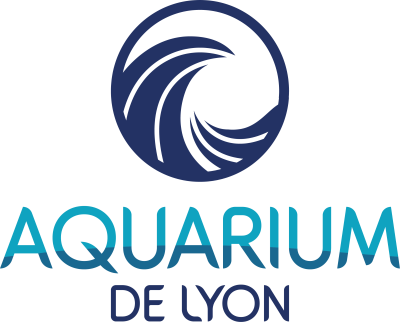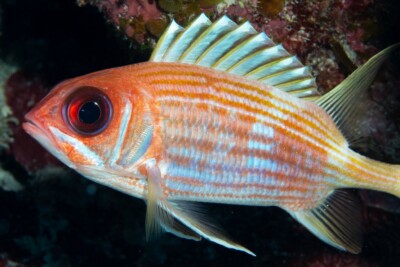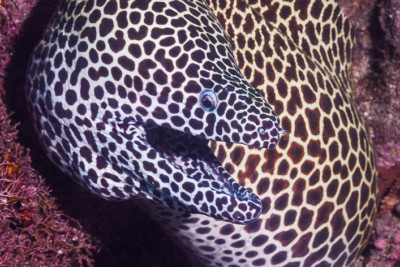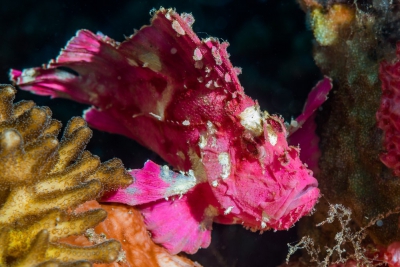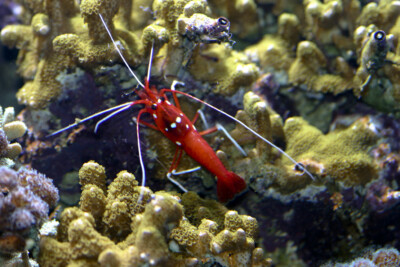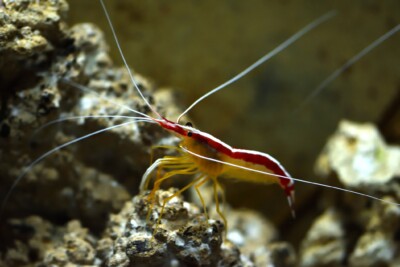Introduction
Lysmata wurdemanni, commonly known as peppermint shrimp, is a little salt water crustacea from the Gulf of Mexico.
This sheet is currently being prepared. The texts currently proposed come from our data model or are being drafted. To request priority for this content, you can write to us HERE.
Who is it?
Morphology
-
Average size1 cm
-
Maximum size1.3 cm
-
Patterndiagonal stripes
-
Mimicryrocky bottoms
-
Average size1 cm
-
Maximum size1.3 cm
-
Patterndiagonal stripes
-
Mimicryrocky bottoms
How to recognize this crustacea ?
The peppermint shrimp measures between 1 and 1.3 cm. Given its small size, this species is commonly referred to as a "dwarf" animal. this crustacea is unicolore with a predominantly rouge body. The also has blanc diagonal stripes.
Behaviour & Life cycle
-
Sociabilityliving in a group or alone
-
territorialNo
-
VenomousNo
-
Way of livingdiurnal
Like all crustaceans, The peppermint shrimp molts whenever it becomes cramped in its shell. Before the hardening of its new body, it is more vulnerable and spends a good part of its time hidden. This mechanism, very complex, allows the periodic renewal of the exoskeleton and part of the internal skeleton. It is also during the moult that the females become fertile.
The peppermint shrimp is a crustacea living in a group or alone naturally found on the bottom. This species is scavenger . Measuring only a few centimeters, this small species tends to be discreet and hide in the presence of larger neighbors.
Although the peppermint shrimp is non-territorial, it is sometimes aggressive towards other species. In a constant quest for dominance, the dominant males of this species cannot stand each other. The battle between two individuals can be intense and violent. It will result in the submission and sometimes even death of one of the protagonists.
Reproduction
-
Reproductionovipare
The peppermint shrimp is a crustacea ovipare. this crustacea always born male. Growing up, individuals will change sex to become female, this is called successive hermaphroditism of the protandrous type. this crustacea protects its eggs from nearby predators.
Harmless species
This species does not represent any particular threats to humans when encountered in its natural environment.
Origin and distribution
What is its habitat?
Natural environment characteristics
-
Temperature24 - 28 °C
-
Depth0 - 37 m
-
EnvironmentFree benthic
Biotope presentation
The peppermint shrimp is most often found at a depth between 0m and 37m. However, it is not impossible to find this species at other depths.
Species of the same biotope
Main recommendations for fishkeeping
Deontology
In order to preserve wildlife, if you acquire this animal, it must not be released into the wild. See also, the Fishipedia charter.
Fishipedia supports the practice of responsible and environmentally friendly aquarium keeping. We encourage maintenance if it is motivated by a desire to understand the biological functioning of living things and if it is done with respect for animal life.
We believe that aquaristics is an opening to the discovery of aquatic environments, especially freshwater, and that this knowledge is necessary to better protect and respect these environments. Logically, we refute the compulsive purchase of animals that would not find a sufficient and / or adapted place in the host aquarium.
Our recommendations
-
Min volume100 liters
-
Population min3
-
Temperature24 - 28 °C
Characteristics
-
Type of maintenanceAquarium
-
Maintenance difficultyhard
-
Availabilityoccasional
-
Behaviourslightly aggressive
-
Robustnesssensible
-
Environmentsalt water
General reminders
It is strongly advised to read the complete dedicated file and to get information on the feedbacks of maintenance of the envisaged animal, this to avoid any potential conflict whose end result is generally the death of the individual (or the other inhabitants). It is important not to overload your aquarium to limit pollution. This will make maintenance easier.
General reminder on maintenance datas
Le démarrage d'un aquarium est une partie primordiale pour l'équilibre et le bien-être des poissons. Lorsque l'on met en eau un aquarium, l'eau passe naturellement par un cycle biologique : le cycle de l'azote. Celui-ci dure environ trois semaines. Tous les 2 jours, nous vous conseillons de tester votre eau jusqu'à ce que le taux de nitrite soit à zéro pendant plusieurs jours d'affilée.
Pour accélérer ce cycle, vous pouvez utiliser un activateur de bactéries comme JBL Denitrol. Cette solution riche en bactéries vivantes et enzymes permet une mise en place rapide du cycle de l'azote. Les poissons peuvent alors être introduits plus rapidement.
Il est important de tester l'eau de son aquarium régulièrement pour maintenir un environnement sain pour les poissons et les autres habitants. Les tests d'eau permettent de mesurer les niveaux de différents paramètres tels que le pH, la dureté totale, ainsi que les taux de nitrates, de nitrites et d'ammoniaque.
Pour réaliser ces tests, vous pouvez utiliser des produits d'analyse spécialisés tels que JBL ProScan qui permet de réaliser un diagnostic de l'eau directement via un smartphone. Il existe également des coffrets de tests plus classiques de bandelettes, comme JBL PROAQUATEST.
En cas d’usage de l’eau du robinet, vous pouvez utiliser un conditionneur d’eau de type Biotopol de JBL pour éliminer les substances nocives comme le chlore, le cuivre, le plomb et le zinc. Une eau trop dure ou trop calcaire peut être inadaptée à de nombreuses espèces tropicales d’eau douce. Si nécessaire, vous pouvez la couper avec de l’eau osmosée ou de pluie filtrée afin d’obtenir une dureté plus adaptée aux besoins de vos poissons et de vos plantes. Les conditionneurs d'eau garantissent une meilleure santé aux poissons et une meilleure croissance des plantes.
Chlorine and chloramine are dangerous for the health of animals. Used to disinfect water, these agents are present in significant quantities in tap water. We recommend using an anti-chlorine agent every time you change the water. In addition to chlorine, treatments and medicines sold for aquarium use sometimes contain dangerous heavy metals in high doses.
Specific needs for the peppermint shrimp
The peppermint shrimp is a marine species which lives naturally at a temperature between 24 °C and 28 °C. The peppermint shrimp is sensitive to abrupt changes in parameters as well as to chemicals. Its acclimation in an aquarium must be done with special care to prevent it from developing diseases or weaknesses. Nitrate levels should remain below 25mg/L. To keep the water clean and unpolluted, plan on changing 20% to 30% of the water volume each month. In seawater, it is also possible to remove nitrates using one of the following methods: Jaubert, denitrator on sulfur, biopeletts, vodka method.
The peppermint shrimp is a species whose maintenance is rather reserved for informed aquarists . It can only be successfully carried out by carrying out a minimum of documentation work. Special husbandry conditions can easily lead to the death of the species.
This species is generally available in specialized shops or from aquarium clubs. Specimens that have been bred for a long time are easier to breed, but special water parameters must be respected.
Copper is toxic to many invertebrates. Some fertilizers and aquarium foods contain copper sulfate and should be used with caution. Since The peppermint shrimp are sensitive to copper, we do not recommend using these products in any form.
Cohabitation & Environment
In a community aquarium context, this species should be kept in a minimum volume of 100 liters.
The males of this species do not support each other, the maintenance of several of them in the same tank is strongly disadvised.
Due to their fragile state during moulting, all crustaceans need an environment provided with hiding places (roots, pebbles, leaves, plants, etc.) to shelter in case of danger.
It should be noticed that this species should not be kept with large crustaceans or fish, as it would become a prey of choice. Smaller species should preferably be inserted in the aquarium some time before the larger ones. Moreover, if you want to breed it, it is better to put them in a specific aquarium.To best reproduce the biotope of this species, you can cover the bottom of the tank with sand and put a pile of stones to form caves.
Tips for feeding
The peppermint shrimp is scavenger.
Feed animals in moderation to maintain good water quality. Meals should be eaten within 2–3 minutes, served in several small portions rather than a single large ration.
Uneaten food quickly decomposes, releasing ammonia, nitrites, and nitrates, which disturb the aquarium’s biological balance.
Make sure each species can access food properly, slower or bottom-dwelling individuals may require targeted feeding.Reproduction protocol
-
Maintenance difficultyvery hard
-
egg-laying protectionYes
Reproduction of this species in an aquarium is considered very hard.
Reproduction of this species is feasible in captivity. Young people are particularly fragile and it will be necessary to be particularly vigilant with all the maintenance parameters
Hybridization risks
In general, it is advised not to mix several species of the same genus or different varieties of the same species, to avoid the risks of hybridization.
To go further
Sources & Contributions
Participation & Validation
The Fishipedia team and specialist contributors are committed to providing high-quality content. However, although the information comes from scientific sources or testimonials from specialists, the cards may contain inaccuracies.

Benoit Chartrer

Adrien Falzon
Translation
Translation done with the valuable contribution of our translators, who make this information available to a wider audience. We sincerely thank them for their commitment.
Bibliographic references
- - GBIF
- - A western Atlantic peppermint shrimp complex: redescription of Lysmata wurdemanni, description of four new species, and remarks on Lysmata rathbunae (Crustacea: Decapoda: Hippolytidae) - A. Rhyne - Lin Junda - BULLETIN OF MARINE SCIENCE, - 2006.
Scientific partners
Same genus
Species of the same biotope
